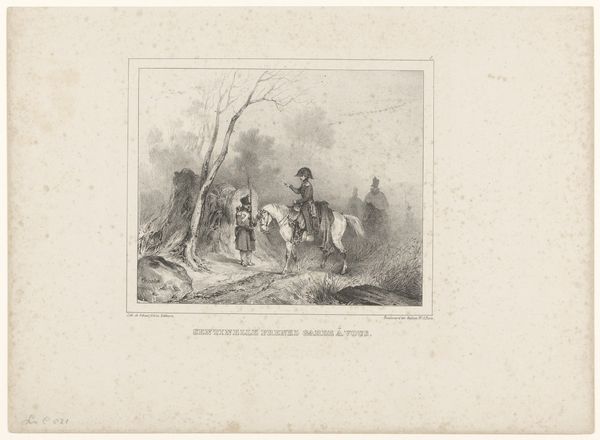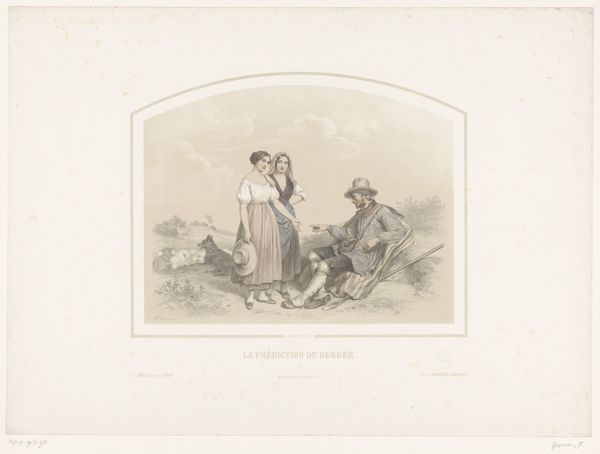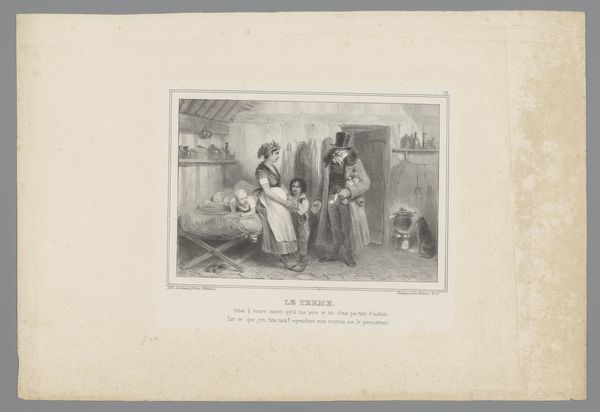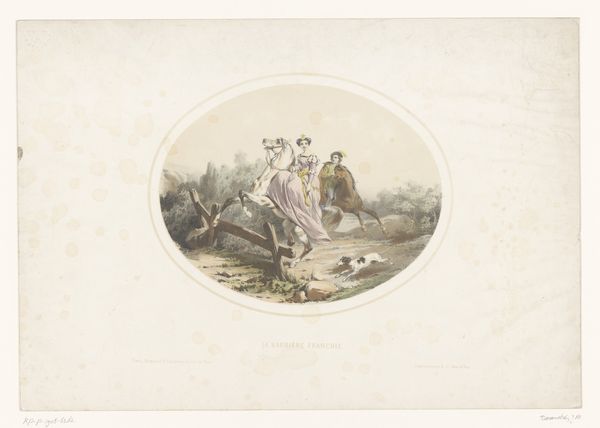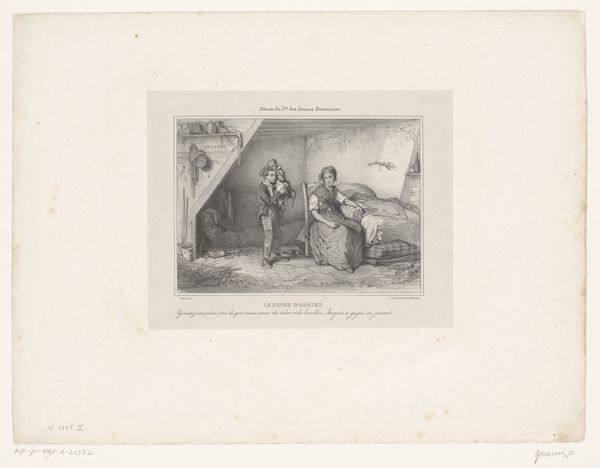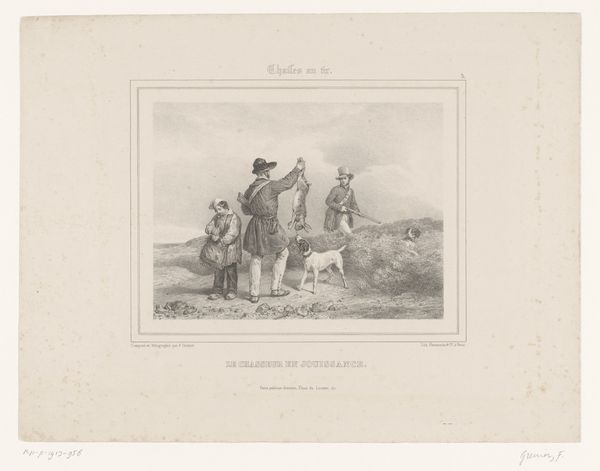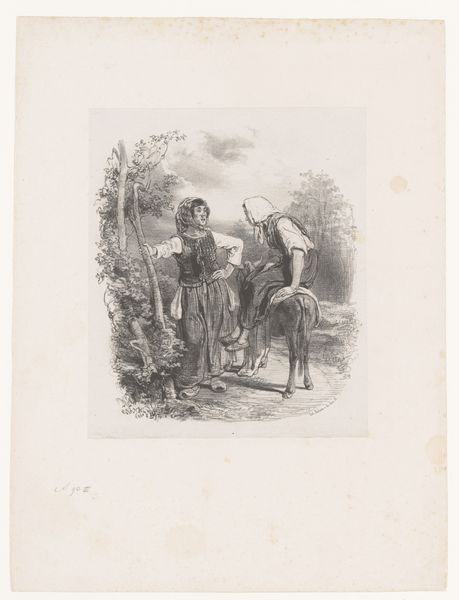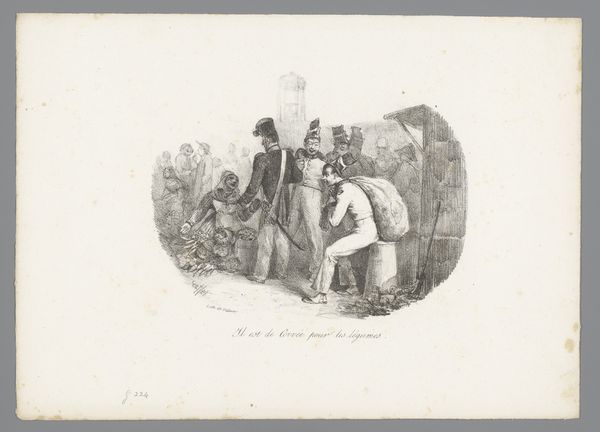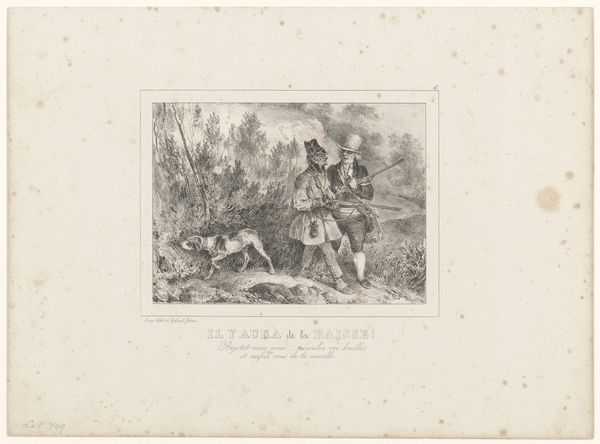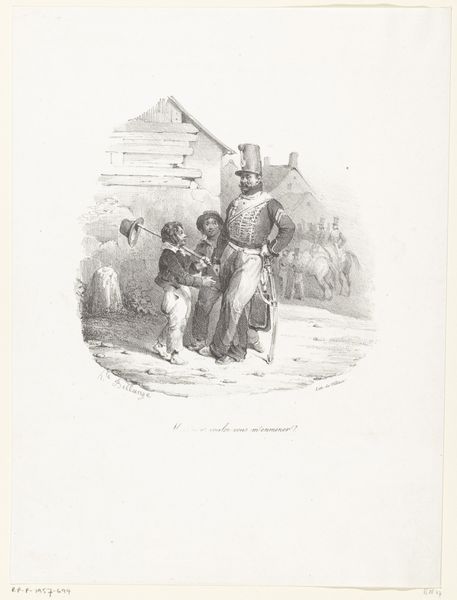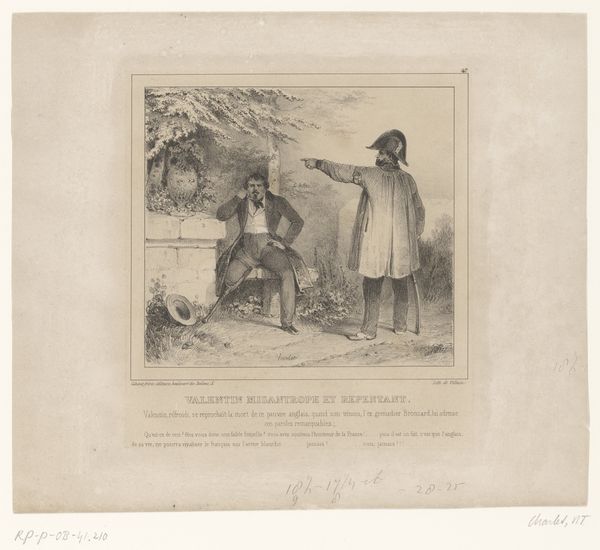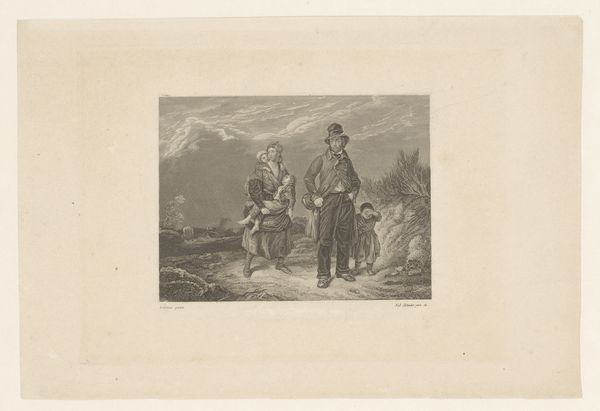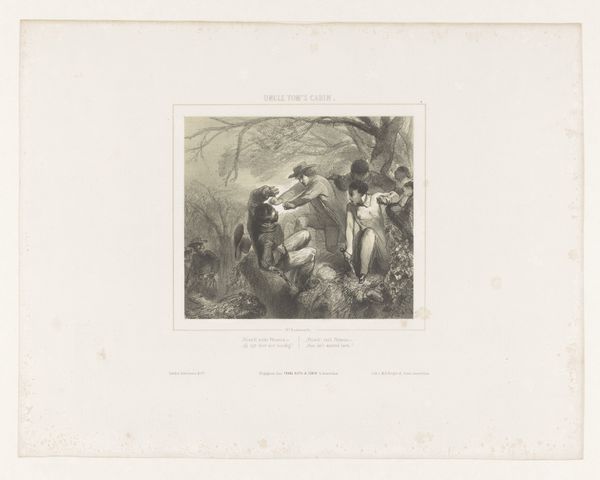
Jongen toont kreeft aan een vrouw en kind bij een beek c. 1819 - 1845
0:00
0:00
lithograph
#
lithograph
#
landscape
#
figuration
#
romanticism
#
genre-painting
Dimensions: height 402 mm, width 553 mm
Copyright: Rijks Museum: Open Domain
Editor: This lithograph, "Jongen toont kreeft aan een vrouw en kind bij een beek," or "Boy Showing a Lobster to a Woman and Child by a Stream," by François Grenier, created sometime between 1819 and 1845, has a serene quality. The figures are posed rather stiffly in this naturalistic landscape, almost like a stage scene. How do you interpret this work, considering the time it was created? Curator: It is serene, isn't it? But perhaps also indicative of larger social structures at play. Genre scenes like this, particularly those from the Romantic period, were often invested in representing idealized visions of family and social roles. Look closely: who is working, who is observing, and what do these activities tell us about the intended audience for such an image, or about class divisions at the time? Editor: So you’re saying the apparent tranquility might actually reinforce certain social hierarchies? The boy, likely of a lower class, is working, while the woman and child observe… almost passively. Curator: Exactly. This division of labor isn’t merely a depiction of daily life; it's a carefully constructed narrative. We must also question who is absent, whose story isn't told in these images? Thinking intersectionally, how might gender and class expectations of this era influenced the ways in which Grenier depicts labor, leisure, and familial relationships? Editor: That’s a really insightful point. I hadn't considered how much is left unsaid. Now I'm seeing a sort of performative aspect to this image; it's less about reality and more about constructing a particular image of society. Curator: Precisely. Art provides not just representation but often justifications or naturalizations of certain cultural realities. We, as viewers, can investigate these historical constructions, understanding how past assumptions affect our contemporary society. Editor: I definitely see the work in a completely different light now. Thank you. Curator: The pleasure was all mine. It's so enriching to uncover the subtle messages embedded in these images.
Comments
No comments
Be the first to comment and join the conversation on the ultimate creative platform.
